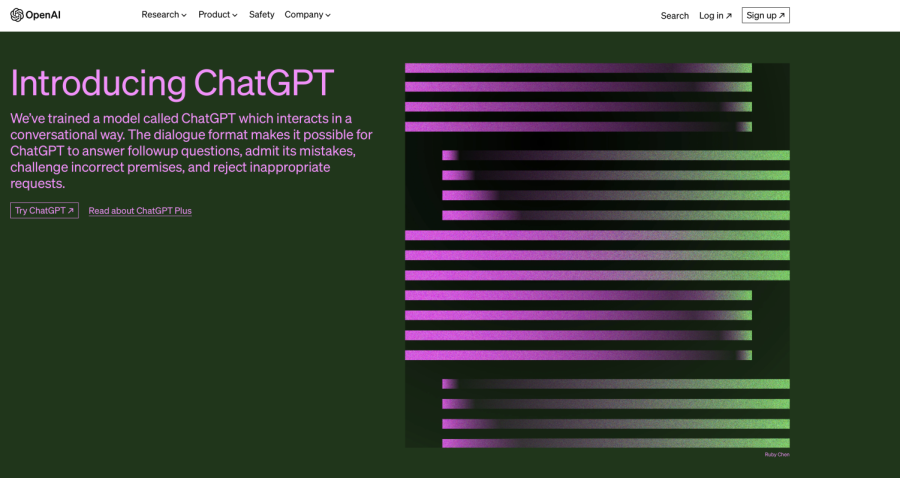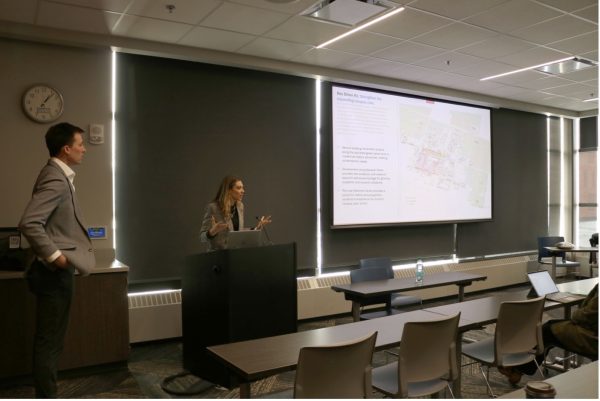Rise of AI promotes discussions in higher ed
Writing engines raise questions about plagiarism, future curriculum
February 28, 2023
Artificial intelligence (AI) writing engines are gaining traction in higher education as universities and colleges increasingly seek innovative ways to enhance the student learning experience. These advanced software programs use natural language processing and complex algorithms to generate high-quality written content, enabling students to produce assignments, essays, and research papers with greater speed and efficiency.
AI writing engines have the potential to transform the way students approach writing, providing a tool for educators to help develop critical thinking and communication skills. As the use of AI in higher education gains momentum, it raises important questions about the future of writing and the role of technology in shaping the classroom experience.
If those first two paragraphs weren’t convincing enough as it is, they were also generated by ChatGPT, one of the newest AI writing tools online created by OpenAI. ChatGPT creates responses based on whatever questions, commands or writing prompts the user inputs, like the one used for this article, “write a lead about AI writing engines in higher education in Associated Press Style.”
But along with the benefits of AI writing, universities like South Dakota State University have also raised questions about the ethical dilemmas of using ChatGPT on school assignments.
Nathan Serfling, an English professor at SDSU, said programs like ChatGPT have prompted some concerns because it can promote plagiarism.
“If I’m worried about it, and I think it should be to a certain extent, because we want our students to do their own work,” he said. “We don’t want them to go in and have ChatGPT generate whole essays for them.”
Jason McEntee, director of the School of English and Interdisciplinary Studies, said students in his classes are already having discussions about AI and its uses, though not all for the same reasons.
“For our English classes, our students are more interested in it because of what it does and what it can do,” he said. “I think in our other classes, for example, the state composition classes, those conversations are a little more, shall I say, diversional, like we’re encouraging you to really not use it to write your papers.”
Educators can also face challenges determining if an essay is AI generated. Current anti-plagiarism technology like Turnitin often can’t detect if an assignment is written by AI since it relies on finding already published language, which ChatGPT-created writing is not.
This kind of technology is also relatively new. ChatGPT was released in November 2022 and has already gone through multiple updates since then.
“We’re aware of AI writing software, but … since November when ChatGPT was released, it’s having this kind of tsunami ripple effect,” said Daniel Justice, a learning designer for SDSU’s Instructional Design Services (IDS), which helps with electronic and technology-based learning on campus.
But even with these concerns, many educators are trying to embrace the new rise in AI writing engines.
Serfling said the university is encouraging faculty and educators to look for ways to incorporate AI into their lessons and assignments, instead of completely trying to stop students from using it.
“It can be a useful tool for brainstorming,” he said. “You know, back in the day when Wikipedia first came out, everyone was like, ‘don’t use Wikipedia, it’s awful,” but now I think … a lot of us go to Wikipedia to get background information.”
AI-generated writing can help students with revision work, outlines and other planning stages of the writing process.
McEntee also said administrators have had conversations about AI, and programs like teacher education have begun planning on how to incorporate AI programs into their curriculums to teach future educators how to use the software.
“(AI’s) immediate impact is so profound that it’s being immediately imported into curriculum,” he said. “That’s something that’s unique about this, is that it usually takes a while. Academia moves slow.”
With all these benefits and positives, however, Justice said some instructors are still worried about an overreliance on this kind of technology because of its quick, easy use.
“Some of the best learning happens when we’re forced to work through a problem and figure it out, to do that with the guidance and feedback from our instructors,” he said. “So obviously, there are concerns about how the technology will be used and (they) are really trying to encourage students to make responsible decisions for their own learning.”
But Serfling said these programs also allow educators to examine their own teachings and assignments to find ways not only to discourage plagiarism but also to use AI like ChatGPT in ethical ways.
“I think a lot of times when students are more inclined to find shortcuts and find end-arounds to the work that they’re doing in class or the work that their instructors ask them to do, it’s because they’re maybe not engaged with the work, and maybe it doesn’t seem as relevant as meaningful,” he said. “So, I think that’s one strategy that we can bring into this, is how do we give students things that they want to write about, that they want to explore?”
While the rise in AI writing engines is still fairly new, Serfling, McEntee and Justice are all interested in where this technology will go from here and what role it might play in higher education in the future, with McEntee saying he plans to try out some of these engines over spring break.
“I’m kind of excited to see what it can do,” he said. “With the current class that I’m teaching, I’m going to go in and enter some of my prompts and see what it cooks up.”






















